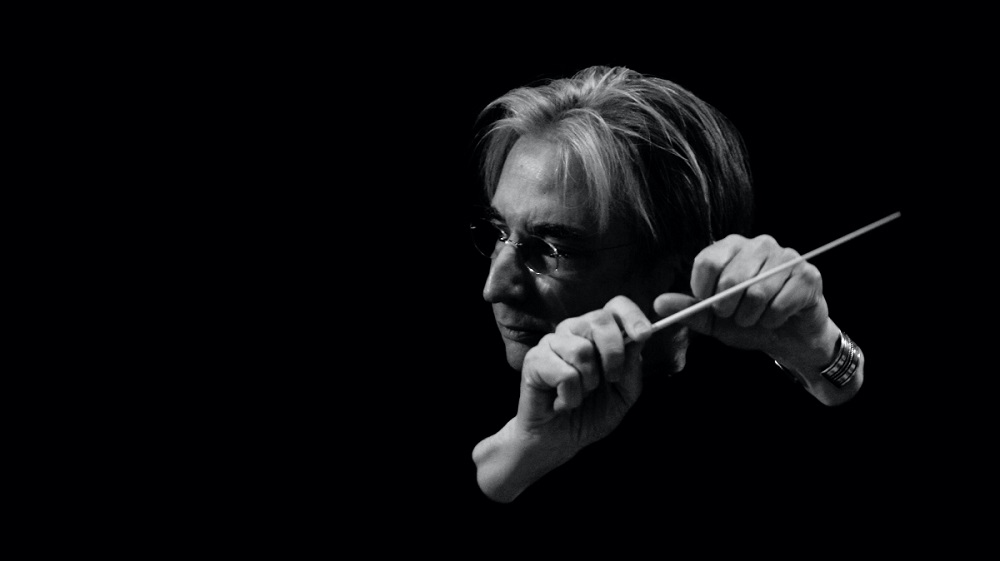
A HEARTFELT ACCOLADE FOR A RETURN
Waves of applause greeted the appearance of beloved conductor emeritus Michael Tilson Thomas on stage, with patrons leaping to their feet willy-nilly in tribute. Great relief for the fans, who had little confidence to believe he’d ever return after his 2021 surgery for an aggressive form of brain cancer.
The 78-year-old now walked slowly, traversing steps cautiously. But his leadership on the podium showed no frailty as he brought off a triumphant choral-orchestral finale to a largely French program of rarities with his associates of the last 28 years in the San Francisco Symphony and Chorus.
That 1926 Villa-Lobos work, with the humdrum title “Choros No. 10,” brought out the fire and flamboyance much needed in a slow-simmering program Jan. 26. That wonderfully rambunctious work, with poetry title “Tear the Heart,” added meaningless chatter recalling Balinese rapid-fire forest kecak (ketjak) chorals. The Brazilian composer conveyed the vast, unique landscape that was Brazil, unique among major nations for its wilderness, mammoth Amazon and sinewy untamed power. This heavy-set opus features boisterous brass with offbeat accents, along with rattles and jungle sound effects. The 100-voice SFS Chorus was assertive and mellifluous in its Portuguese texts.
Above all, the composer showed a conciseness in his robust 11-minute work all too absent in most of the other pieces this night.
The sole familiar work in this mostly French evening was Debussy’s enigmatic-impressionistic “The Afternoon of a Faun,” its opening fully exposed flute solo (a dream part for orchestra musicians) rendered with neat restraint by a substitute player, Blair Francis Paponiu, as the flute principal chair is still vacant. The work has a history, not just for its trail-blazing ancient-Greek stylized dance interpretation in the Diaghilev ballets of a century ago, but also its having been played in the SFS’ very first season, in Feb. 1912. It stamped a new language in music, evolved in a misty and mysterious lack of specificity.
Also by Debussy was the rarity “Fantaisie for Piano and Orchestra” of 1919, in the Jouve version published a half-century later. This would-be concerto, you could say, was Debussy before he became Debussy, much more related to the traditional 19th-century symphonists like Franck and d’Indy. The piano soloist was the fashion plate Jean-Yves Thibaudet, who wore his familiar red socks and was careful to change to a contrasting shirt over intermission. His virtuosity shone in both works he did, and clearly the jazz chords and the bravura played into his talents. His toccata style was vibrant, even though he showed little of his lyricism.
I visualize the very devout composer Olivier Messiaen prostrated by the hour before some altar or saintly statuary, declaring his unbounded love for God, like a monk of old in a monastery. And his curiously named “Three Little Liturgies of the Presence of the Divine” carries forward that love, “Amour,” mentioned repeatedly over 50-60 lines of text sung by the women’s chorus and 36 very long minutes of music. One eloquent patron emerged from it with a sigh declaring, “Well, I think I’ve fulfilled all my religious obligations for the next month or two.”
Since the SFS Chorus with all its lovely tones shows little love for consonants, it’s impossible to follow the meticulously printed and translated text in Davies Hall. For choral evenings, the Symphony needs to use supertitle projections of the text, coordinated line by line to song. Otherwise you ask, is this the part about the birds? Or the animals? Or the stars? Or colors? Or amour? Or hope, truth, eternity??
MUSIC NOTES—In the latter work, MTT had brought downstage three keyboards (piano, celesta, Ondes Martenot) plus the vibraphone in order to underline their focal roles.
S.F. SYMPHONY and chorus in Villa-Lobos and French composers, through Jan. 28. Davies Hall, S.F. For info: (415) 864-6000 or go online www.sfsymphony.org.